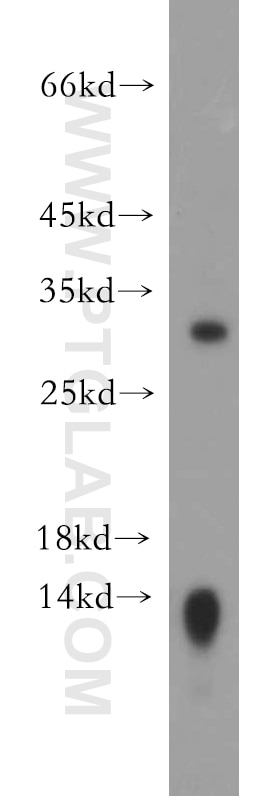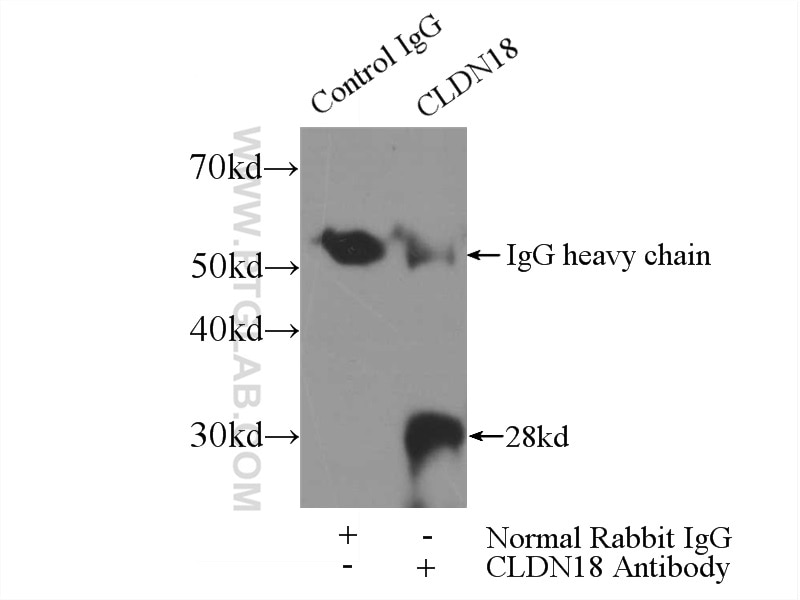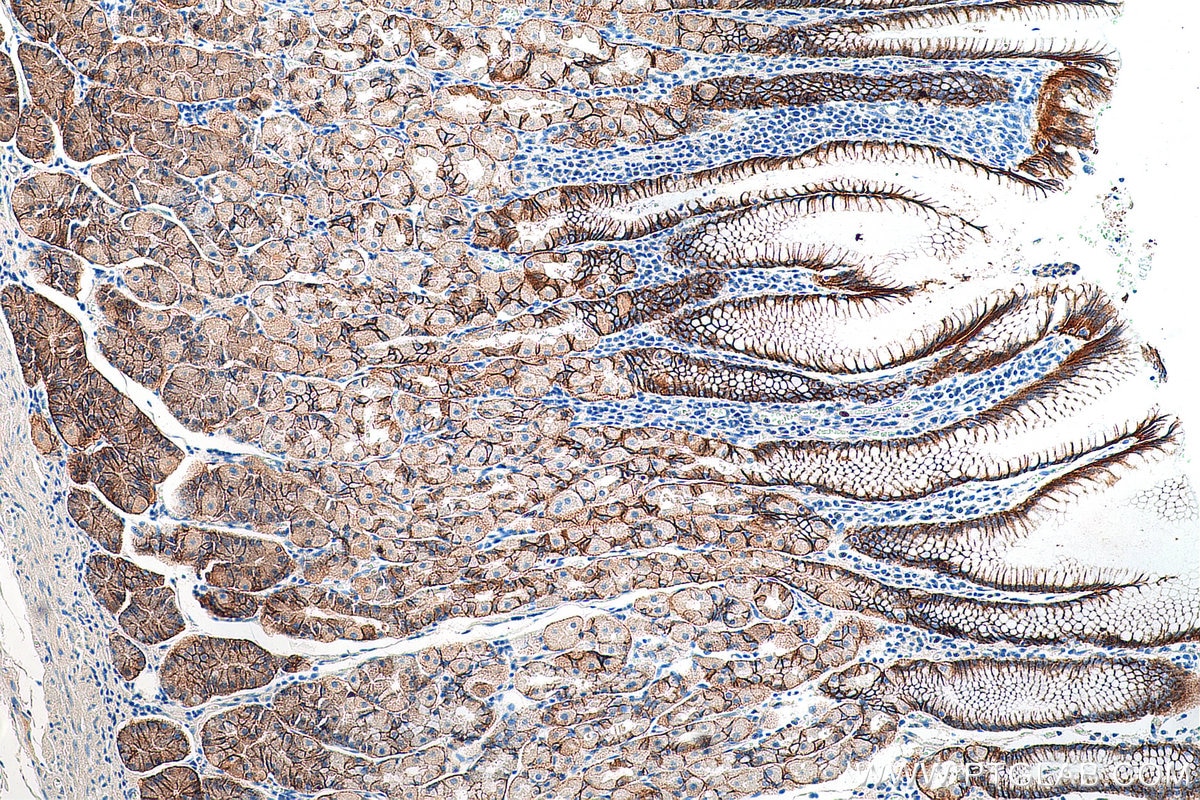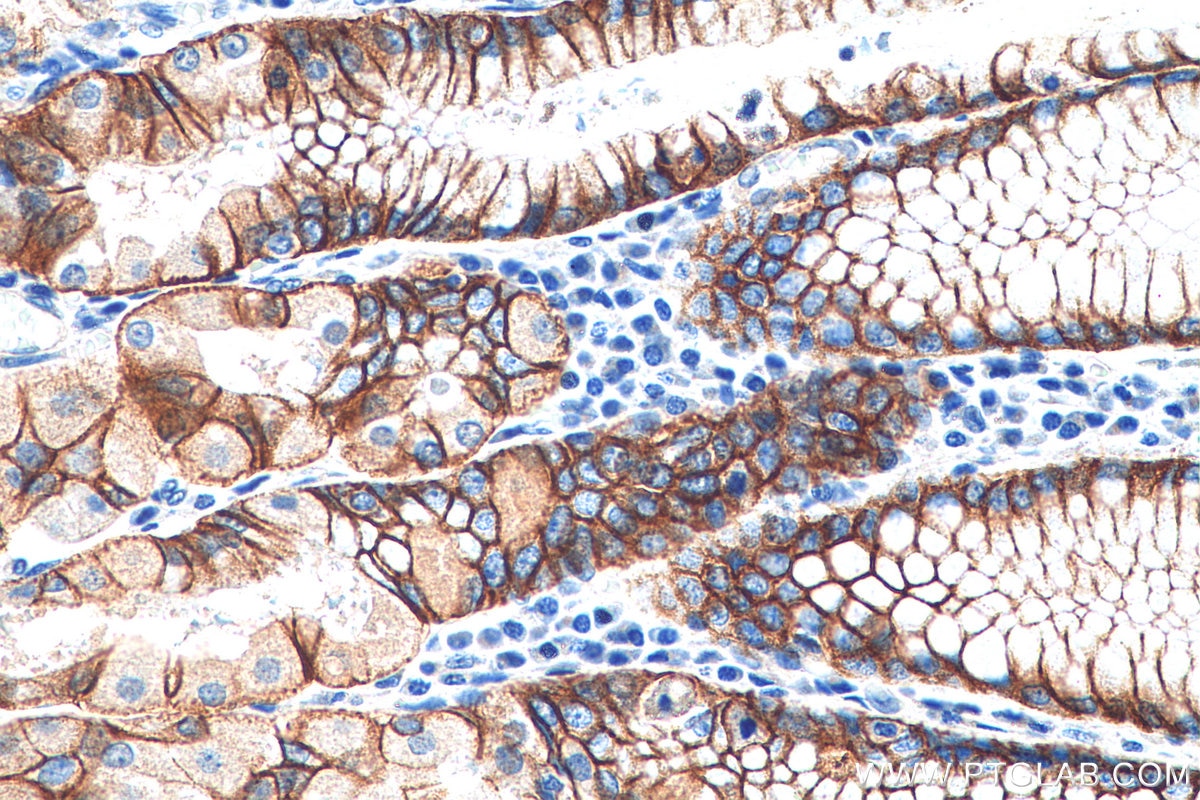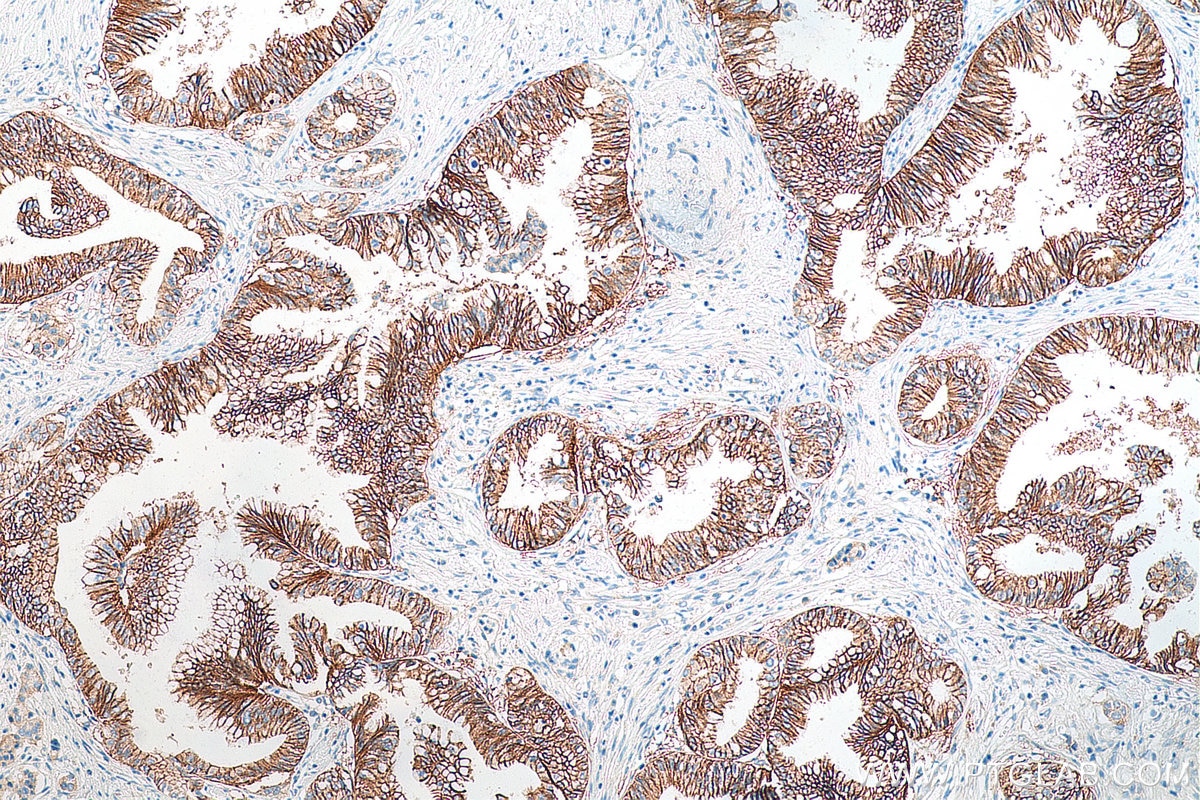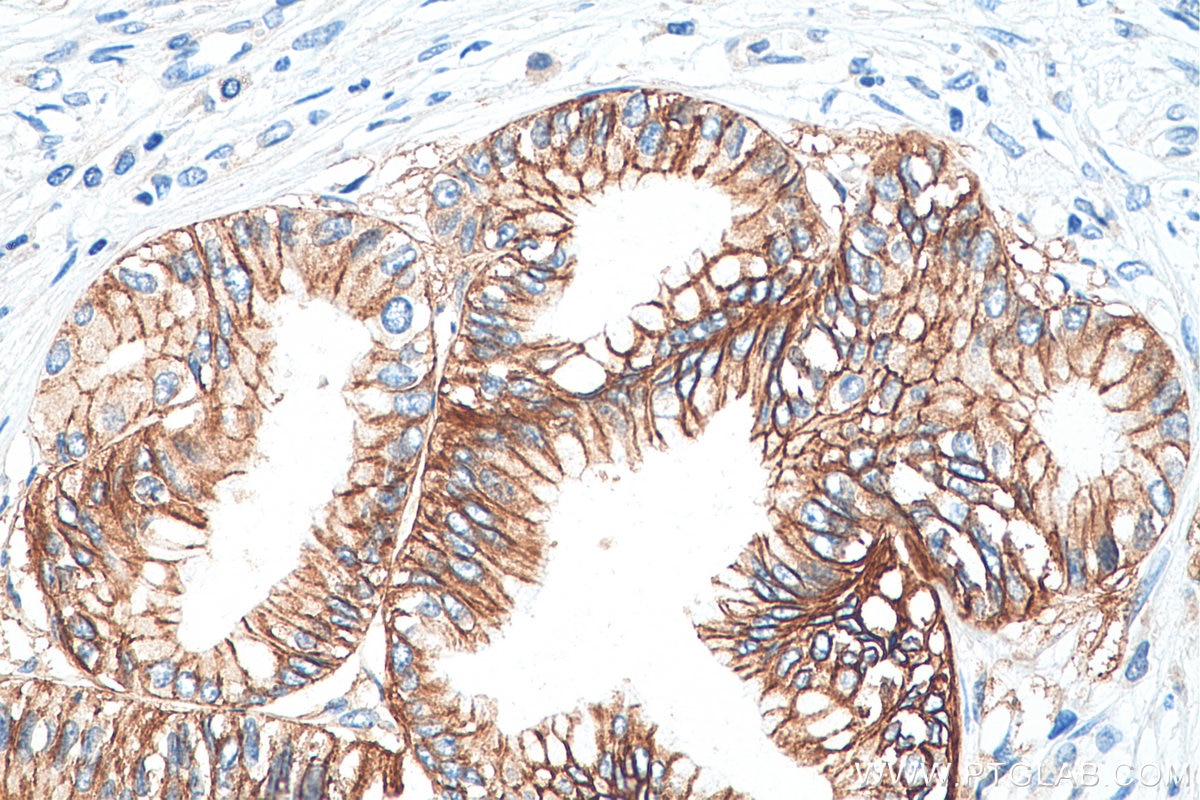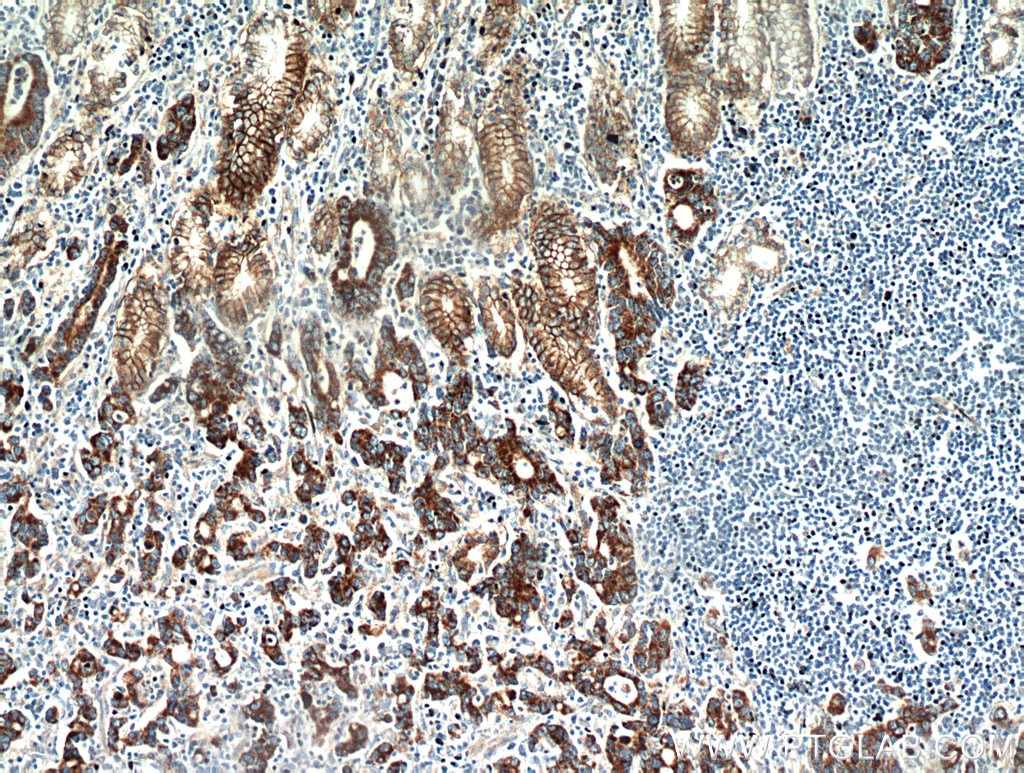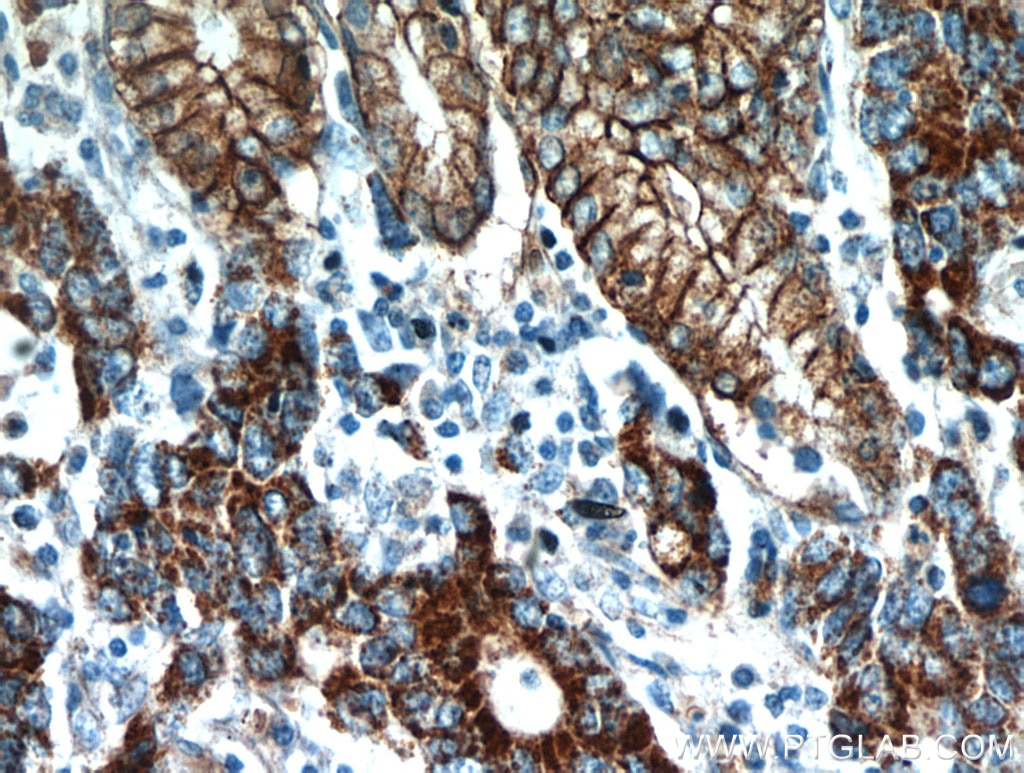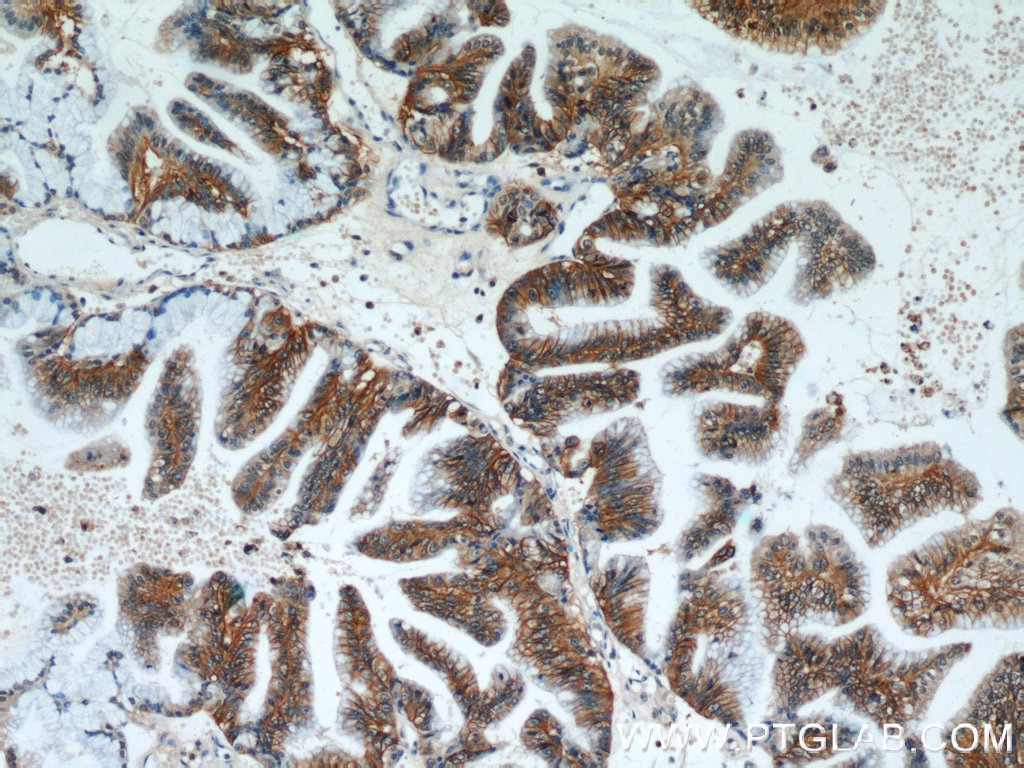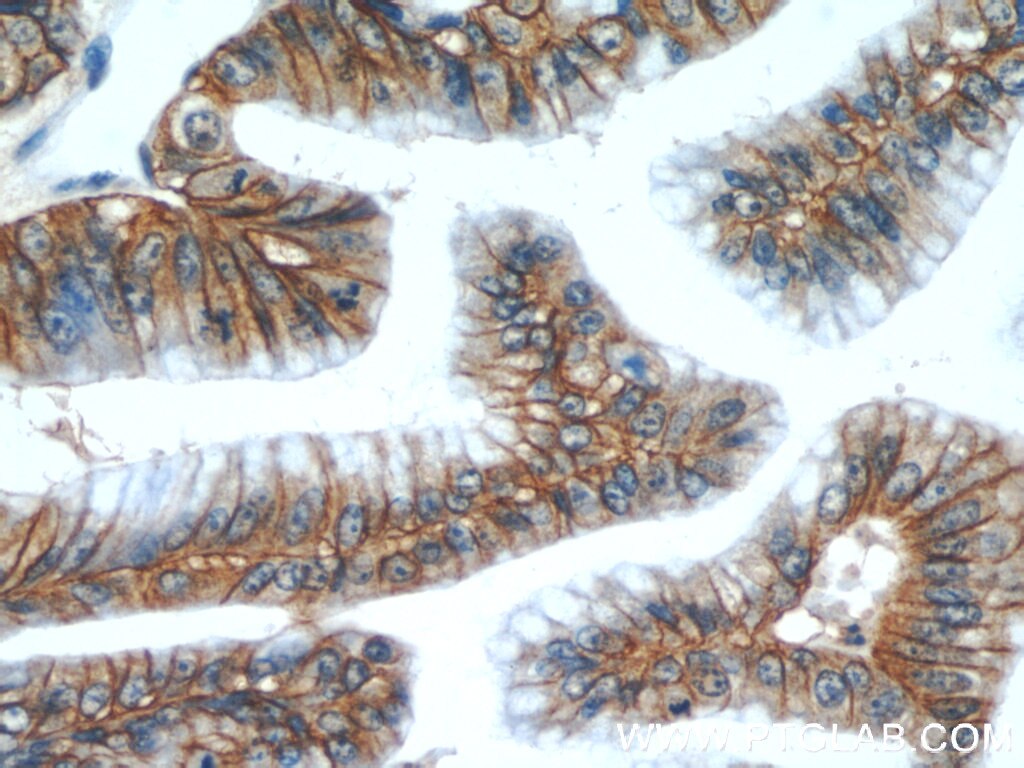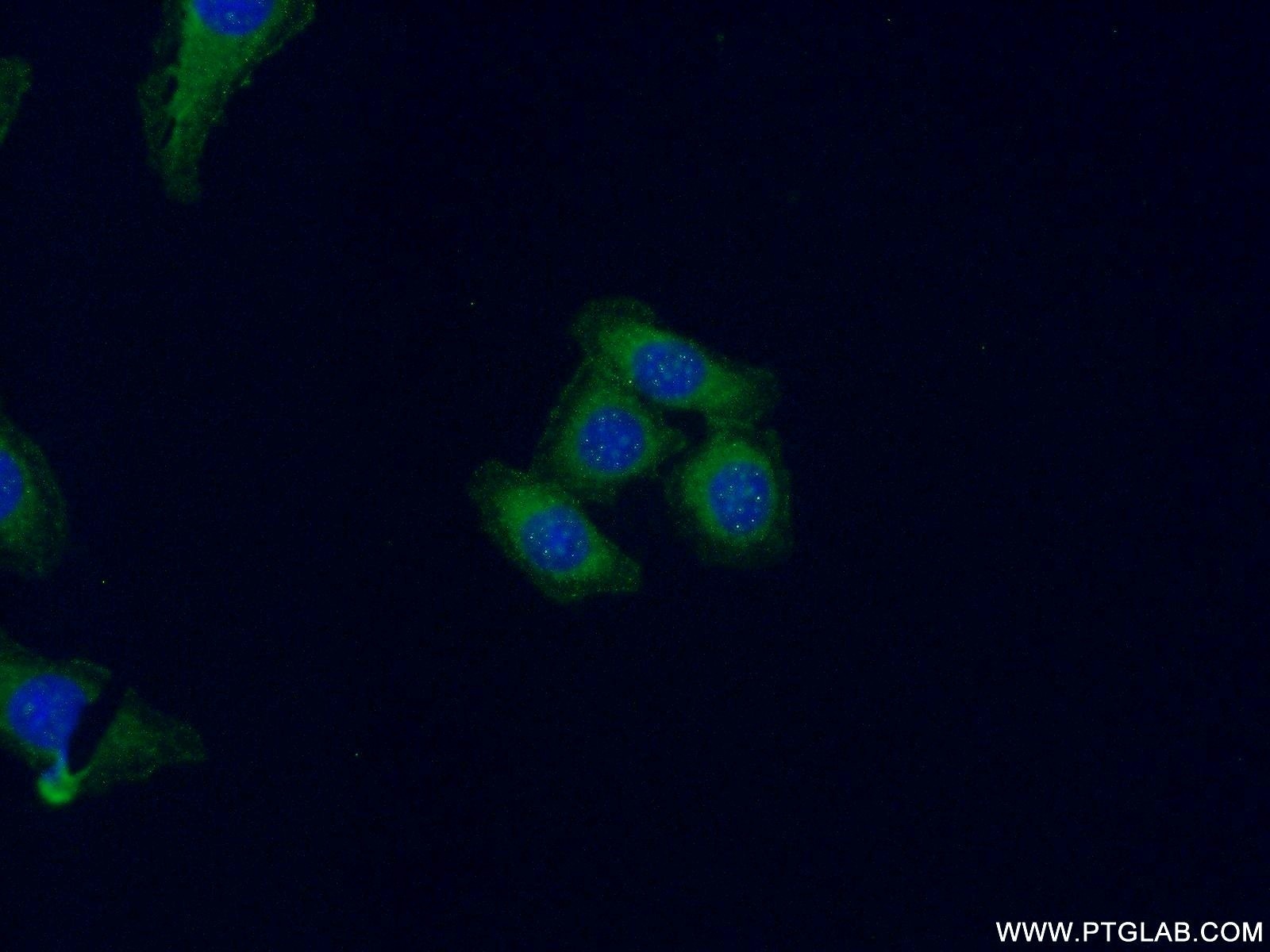Tested Applications
| Positive WB detected in | mouse kidney tissue |
| Positive IP detected in | mouse stomach tissue |
| Positive IHC detected in | human stomach tissue, human stomach cancer tissue, human ovary tumor tissue, human pancreas cancer tissue Note: suggested antigen retrieval with TE buffer pH 9.0; (*) Alternatively, antigen retrieval may be performed with citrate buffer pH 6.0 |
| Positive IF/ICC detected in | MKN-45 cells |
Recommended dilution
| Application | Dilution |
|---|---|
| Western Blot (WB) | WB : 1:500-1:1000 |
| Immunoprecipitation (IP) | IP : 0.5-4.0 ug for 1.0-3.0 mg of total protein lysate |
| Immunohistochemistry (IHC) | IHC : 1:500-1:2000 |
| Immunofluorescence (IF)/ICC | IF/ICC : 1:50-1:500 |
| It is recommended that this reagent should be titrated in each testing system to obtain optimal results. | |
| Sample-dependent, Check data in validation data gallery. | |
Published Applications
| WB | See 3 publications below |
| IHC | See 4 publications below |
| IF | See 4 publications below |
Product Information
21126-1-AP targets Claudin 18 in WB, IHC, IF/ICC, IP, ELISA applications and shows reactivity with human, mouse, rat samples.
| Tested Reactivity | human, mouse, rat |
| Cited Reactivity | human, mouse, rat |
| Host / Isotype | Rabbit / IgG |
| Class | Polyclonal |
| Type | Antibody |
| Immunogen |
CatNo: Ag15517 Product name: Recombinant human CLDN18 protein Source: e coli.-derived, PGEX-4T Tag: GST Domain: 185-261 aa of BC146668 Sequence: TLIGGVMMCIACRGLAPEETNYKAVSYHASGHSVAYKPGGFKASTGFGSNTKNKKIYDGGARTEDEVQSYPSKHDYV Predict reactive species |
| Full Name | claudin 18 |
| Calculated Molecular Weight | 261 aa, 28 kDa |
| Observed Molecular Weight | 28-29 kDa |
| GenBank Accession Number | BC146668 |
| Gene Symbol | CLDN18 |
| Gene ID (NCBI) | 51208 |
| RRID | AB_10733638 |
| Conjugate | Unconjugated |
| Form | Liquid |
| Purification Method | Antigen affinity purification |
| UNIPROT ID | P56856 |
| Storage Buffer | PBS with 0.02% sodium azide and 50% glycerol, pH 7.3. |
| Storage Conditions | Store at -20°C. Stable for one year after shipment. Aliquoting is unnecessary for -20oC storage. 20ul sizes contain 0.1% BSA. |
Background Information
Claudin 18 (CLDN18) belongs to the large claudin family of proteins, which are tetraspan transmembrane proteins of tight junctions (PMID: 11585919; 18036336). Claudins exhibit specific patterns of expression in different tissues (PMID: 15447685). CLDN18 is specifically expressed in the stomach and lung. CLDN18 has two alternatively spliced variants, CLDN18.1 and CLDN18.2. CLDN18.2 is a highly selective gastric lineage marker that determines the gastric phenotype in a neoplastic condition, whereas CLDN18.1 is lung specific (PMID: 11585919; 21832145). Altered CLDN18 expression has been reported in various human malignancies, including gastric cancer, lung adenocarcinoma, and pancreatic neoplasm (PMID: 17459057; 22076167; 21832145). This antibody can recognize both CLDN18.1 and CLDN18.2.
Protocols
| Product Specific Protocols | |
|---|---|
| IF protocol for Claudin 18 antibody 21126-1-AP | Download protocol |
| IHC protocol for Claudin 18 antibody 21126-1-AP | Download protocol |
| IP protocol for Claudin 18 antibody 21126-1-AP | Download protocol |
| WB protocol for Claudin 18 antibody 21126-1-AP | Download protocol |
| Standard Protocols | |
|---|---|
| Click here to view our Standard Protocols |
Publications
| Species | Application | Title |
|---|---|---|
Cell Rep Med Personalized drug screening in patient-derived organoids of biliary tract cancer and its clinical application | ||
Ann Transl Med Inhibition of protein kinase C alpha attenuates lipopolysaccharide-triggered acute lung injury by alleviating the hyperinflammatory response and oxidative stress. | ||
Int J Mol Med Investigating the regulatory role of ORMDL3 in airway barrier dysfunction using in vivo and in vitro models. | ||
BMC Pulm Med SPAK-p38 MAPK signal pathway modulates claudin-18 and barrier function of alveolar epithelium after hyperoxic exposure. | ||
J Stroke Cerebrovasc Dis Effect of MicroRNA-126a-3p on Bone Marrow Mesenchymal Stem Cells Repairing Blood-brain Barrier and Nerve Injury after Intracerebral Hemorrhage. | ||
Am J Cancer Res Colorectal cancer cell-secreted exosomal miRNA N-72 promotes tumor angiogenesis by targeting CLDN18 |

